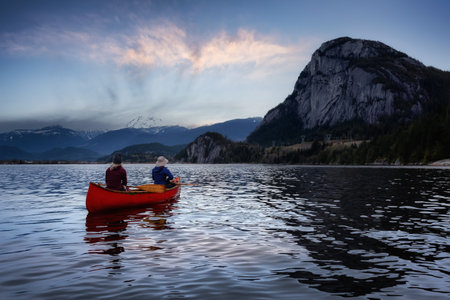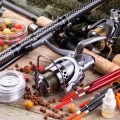1. Choosing the Right Base Layers
When it comes to building the perfect fishing outfit, whether you’re heading out to a local freshwater lake or casting lines by the salty seashore, your base layers are where comfort and performance start. As a family who loves spending weekends by the water—sometimes at a nearby pond, other times making a day trip to the coast—we’ve learned firsthand how much your shirt and pants can make (or break) your adventure.
Why Moisture-Wicking Shirts Matter
Fishing often means hours under the sun, and sometimes even a surprise splash from a big catch or a passing wave! That’s why moisture-wicking shirts are an absolute must. They pull sweat away from your skin and dry quickly, which keeps you feeling cool and helps prevent chafing. Whether you’re reeling in bass or surf fishing for redfish, nobody wants to be sticky and uncomfortable.
Choosing Comfortable Pants
Pants are just as important as your shirt. For both freshwater and saltwater trips, look for lightweight, quick-drying materials that let you move easily. Some families prefer convertible pants that zip off into shorts—super handy if the weather changes or you want to wade into shallow water with your kids.
Freshwater vs Saltwater: What’s Different?
| Freshwater Fishing | Saltwater Fishing | |
|---|---|---|
| Shirt Material | Lightweight polyester or merino wool works great for lakes and rivers where humidity can vary. | Look for UV-protective fabrics since there’s usually more direct sun exposure on open coasts. |
| Pant Features | Breathable pants for hiking through woods or sitting by grassy banks; convertible styles are a plus. | Pants with reinforced knees or extra pockets for gear come in handy, especially when moving around rocky shorelines. |
| Color Choices | Earth tones help blend into natural surroundings if you’re trying not to spook fish. | Lighter colors reflect sunlight and keep you cooler on bright sandy beaches. |
The Role of Local Weather
Your local weather really shapes what base layers work best. Here in the Midwest, spring mornings can be chilly while afternoons get warm fast, so layering is key. In southern coastal areas like Florida, staying cool is a bigger deal than staying warm, so ultra-lightweight shirts and pants rule the day. Always check the forecast before packing—and don’t forget that sudden rain showers are part of the adventure!
2. Essential Outerwear and Protection
When you’re gearing up for a fishing adventure, what you wear on the outside matters just as much as your base layers. The right outerwear can make or break your day—especially if the weather changes in a flash or you’re exposed to different elements depending on whether you’re lakeside or out at sea. Here’s how to choose the best rain jackets, windbreakers, and UV-protection clothing for both freshwater and saltwater fishing.
Rain Jackets: Stay Dry, Stay Happy
Lakes: If you’re planning a relaxing day by a calm lake, a lightweight, packable rain jacket is usually enough. Look for something breathable so you don’t overheat while reeling in your catch.
Ocean: Saltwater trips call for heavy-duty, waterproof jackets. Salt spray, stronger winds, and sudden squalls are more common on the ocean, so invest in a jacket with sealed seams and corrosion-resistant zippers.
Key Differences in Rain Jackets
| Feature | Freshwater (Lake) | Saltwater (Ocean) |
|---|---|---|
| Material Weight | Lightweight & breathable | Thicker & more durable |
| Pocket Placement | Simpler layout | More secure & protected pockets |
| Zippers & Seams | Standard water-resistant | Fully sealed & corrosion-proof |
Windbreakers: Block the Breeze
Lakes: Early mornings can get chilly by the water. A basic windbreaker layered over your shirt keeps those brisk winds at bay without weighing you down.
Ocean: Out on the open water, wind can be relentless. Go for a windbreaker that’s both windproof and has some water resistance—bonus points if it’s easy to move in when casting from a rocking boat!
UV-Protection Clothing: Defend Your Skin
The sun can be sneaky, especially when it reflects off the water. UV-protective shirts, pants, and hats are essential no matter where you fish—but the level of protection might vary.
- Lakes: A long-sleeve UV shirt and a wide-brimmed hat are often enough for all-day comfort.
- Oceans: You’ll need full coverage with UPF-rated clothing—think neck gaiters, gloves, and even face masks—to guard against harsh sun and salt spray.
Quick Tips for Choosing Outerwear:
- Pocket Space: Make sure your jacket or windbreaker has enough secure pockets for small tackle or snacks.
- Camo vs. Bright Colors: Lakeside anglers might prefer earth tones to blend in; ocean fishers often pick bright colors for visibility and safety.
- Easy Care: Saltwater gear should be rinsed after every trip to prevent damage from salt buildup.
No matter where your fishing adventures take you—whether it’s a peaceful morning at the lake with family or a salty splash-filled outing on the coast—the right outerwear will keep you comfortable, dry, and protected all day long.
![]()
3. Footwear for Every Terrain
When it comes to fishing, the right footwear can make or break your experience—especially if you’re moving between freshwater rivers and lakes or heading out for a day on the salty coast. Let’s walk through the best choices for different terrains and what to look for so you and your family stay comfy, safe, and ready for adventure.
Choosing the Right Shoes: Boots, Water Shoes, or Sandals?
Your choice really depends on where you’ll be fishing. Here’s a handy table that breaks down what works best for riverbanks, rocky lakeshores, and saltwater docks:
| Terrain | Best Footwear | Why It Works |
|---|---|---|
| Riverbanks | Water Shoes or Wading Boots | Grippy soles for slippery mud; quick-drying material keeps feet comfy after splashes. |
| Rocky Lakeshores | Sturdy Boots or Closed-Toe Water Shoes | Protects toes from sharp rocks; provides ankle support and solid traction. |
| Saltwater Docks & Piers | Sandals (with straps) or Water Shoes | Easy to rinse off salt and sand; fast drying; secure fit for walking on wet planks. |
What to Look For in Fishing Footwear
Traction Matters!
No matter where you fish, slips can happen fast. Look for non-slip rubber soles with deep treads—these help keep you steady whether you’re balancing on mossy rocks or a slick dock after a wave rolls in.
Quick-Drying Materials Keep You Comfortable
Soggy shoes are no fun! Mesh uppers, drain holes, and moisture-wicking linings mean your feet dry out fast after getting wet. This is especially important for kids who love to splash around (and let’s be honest—adults too!).
A Parent’s Tip:
If your little one insists on sandals, make sure they have back straps so they don’t slip off in the water or get lost in the mud. We’ve learned this the hard way more than once during family trips!
4. Must-Have Accessories
Whether you’re heading out for a quiet morning on the lake or braving the salty ocean breeze, your fishing adventure isn’t complete without the right accessories. These small but mighty items can make all the difference in comfort, protection, and even your catch rate! Let’s break down the must-haves for freshwater and saltwater fishing—and why each one matters.
Cover Hats: Your First Line of Defense
A good hat does more than just keep the sun out of your eyes—it shields your face, neck, and sometimes even ears from harmful UV rays. For freshwater trips, a simple baseball cap might do the trick if you’re staying under trees or an umbrella. But on open saltwater, consider a wide-brimmed hat or a cap with a neck flap for all-around protection against the blazing sun and salty wind.
Polarized Sunglasses: See What Others Miss
No matter where you fish, polarized sunglasses are a game changer. They cut glare off the water so you can spot fish beneath the surface—great for teaching kids to “sight fish.” In freshwater environments like lakes and rivers, brown or amber lenses boost contrast. On bright, reflective saltwater flats, blue or gray lenses offer better eye comfort. Plus, they protect your eyes from flying hooks!
Gloves: Grip and Guard
Fishing gloves aren’t just for pros. They protect your hands from line cuts, sharp fins, sunburn, and even cold water. Lightweight fingerless gloves work well for freshwater trips where dexterity is key—think tying knots with tiny hooks! For saltwater adventures, go for full-coverage gloves made of quick-dry materials to withstand abrasive fish scales and salt spray.
Buffs: Versatile Protection
A buff (also called a neck gaiter) is basically a superhero accessory for anglers of all ages! Wear it as a scarf, mask, headband, or even to cover your whole face when that midday sun gets intense. In freshwater settings, buffs keep bugs at bay during early mornings. Out on salty shores or boats, they guard against windburn and sunburn—especially when paired with sunscreen.
Quick Comparison Table
| Accessory | Freshwater Focus | Saltwater Focus |
|---|---|---|
| Hat | Baseball cap; light coverage under shade | Wide-brimmed or neck flap hat; max sun & wind protection |
| Polarized Sunglasses | Brown/amber lenses for contrast in shaded waters | Blue/gray lenses for glare reduction on open water |
| Gloves | Lightweight fingerless for knot-tying & light gear | Full coverage; quick-dry material for abrasion/salt resistance |
| Buffs | Bugs & early morning chill protection | Sun/wind/burn guard in harsh marine conditions |
Tip for Parents:
If you’re fishing with kids, make accessorizing part of the fun! Let them pick their own brightly colored buffs or hats—they’ll be excited to wear their gear and stay protected all day long.
5. Gear Adaptations for Freshwater vs Saltwater
When planning the perfect fishing outfit, it’s not just about rods and reels! Your gear setup—like tackle bags, fishing vests, and tool storage—needs to match your adventure. Whether you’re hiking along a wooded stream with your family or braving salty ocean spray on a boat, picking the right organizational tools makes all the difference. Let’s break down how these essential items differ for freshwater and saltwater fishing:
Tackle Bags: Built for the Environment
| Feature | Freshwater Streams | Saltwater Adventures |
|---|---|---|
| Material | Lighter fabrics, often canvas or nylon | Heavy-duty, corrosion-resistant materials (think PVC or tarpaulin) |
| Size & Portability | Compact, easy to sling over your shoulder or wear as a backpack while hiking | Larger, boxy designs with extra compartments for bigger lures and tools—great for boat decks |
| Pockets/Compartments | Fewer, smaller pockets for finesse lures and lightweight gear | Plenty of roomy sections for saltwater rigs, pliers, and even sunscreen! |
| Waterproofing | Splash-resistant is usually enough | Must be fully waterproof or at least highly water-resistant to handle ocean spray and waves |
Fishing Vests: Function Meets Comfort
If you love hands-free access to your gear (especially when teaching kids to fish), a vest can be your best friend. For freshwater streams, think lightweight with mesh panels to keep cool on those summer hikes. Pockets are smaller—just right for flies and bobbers. But out on the salty sea? You want a sturdier vest made from synthetic materials that won’t soak up water or let metal zippers rust. Larger pouches mean room for bigger saltwater lures and heavier leaders.
Pocket Placement Makes a Difference!
- Freshwater: Chest-level pockets help you grab tiny tackle without bending down.
- Saltwater: Waist-level pouches let you stash bulkier items like de-hookers or gloves—easy to reach when you’re rocking on a boat.
Tool Storage: Ready for Anything?
A good day’s catch can depend on having the right tools handy. In freshwater, a simple multi-tool clipped to your vest may do the trick. But in saltwater? Go with stainless steel tools and sturdy plastic sheaths—they won’t rust after a splash or two. Some anglers even prefer magnetic tool holders on boats so pliers and knives don’t slide away!
Quick Tip:
- Freshwater: Lightweight clips and retractors keep essentials secure while wading through streams.
- Saltwater: Double-check that every storage compartment seals tightly; salt spray is sneaky and can ruin gear fast!
No matter where your fishing journey takes you—from lazy rivers to choppy coasts—matching your outfit’s organization to your environment means more time enjoying the action (and less time untangling tackle). Plus, adapting your gear keeps everyone safe and stress-free, whether it’s your first cast or hundredth trip together!
6. Safety First – Staying Prepared
Whether you’re taking your kids on a peaceful day at the lake or heading out for an ocean adventure, staying safe is key to having a great fishing experience. As parents and fishing buddies, it’s our job to make sure everyone is protected from unexpected bumps, sunburns, and those sneaky bugs that can ruin a fun trip. Here are some simple tips for packing safety essentials for both freshwater and saltwater fishing.
First Aid Kits: Your Go-To Rescue Pack
No matter where you fish, accidents can happen—scraped knees on slippery rocks or minor cuts from hooks. A basic first aid kit should always be in your tackle box or backpack. Here’s what we recommend:
| Must-Haves | Why You Need It |
|---|---|
| Bandages & gauze pads | For cuts and scrapes |
| Antiseptic wipes/cream | To clean wounds quickly |
| Tweezers | Handy for removing fish hooks or splinters |
| Medical tape & scissors | For securing bandages or quick fixes |
| Pain relievers (kids & adults) | Headaches or minor aches happen! |
| Allergy medicine (if needed) | Just in case of bites or stings |
Hydration: Keep Everyone Refreshed
Fishing trips can get hot, especially under the summer sun. Dehydration sneaks up fast! For family outings, pack enough water bottles for everyone. In saltwater environments, the salty air and wind can dry you out even quicker—so double up on fluids. Consider using insulated water jugs to keep drinks cool all day. If you want to lighten your load, try hydration packs for hands-free sipping, especially if you’ll be moving around a lot.
Sun Protection: Shield from Rays
The sun reflects off water, making sunburns more likely—on lakes or at the beach! Always bring broad-spectrum sunscreen (SPF 30+), reapplying every two hours, especially after swimming or sweating. Don’t forget hats with brims and UV-blocking sunglasses for everyone in the family. For saltwater adventures where shade may be scarce, lightweight long-sleeve shirts and neck gaiters offer extra protection.
Packing Sun Protection Checklist:
- Sunscreen (SPF 30+, water-resistant)
- Lip balm with SPF
- Hats with wide brims
- Sunglasses with UV protection
- Long-sleeve shirts & neck gaiters (especially for saltwater)
Bugs Be Gone: Insect Repellent Essentials
Mosquitoes love freshwater spots, while sandflies might bug you at the coast. Pack a reliable insect repellent—look for DEET-based sprays or natural options if you prefer. For younger kids, choose child-safe formulas. Bug-repelling bracelets or clip-ons are great for little ones who don’t like sprays.
| Environment | Bugs to Watch For | Repellent Tips |
|---|---|---|
| Freshwater (lakes/rivers) | Mosquitoes, ticks | Use spray-on repellents; check clothes/skin after hikes through brush. |
| Saltwater (beaches/piers) | Sandflies, gnats | Creams/lotions work well; reapply after swimming. |
A Parent’s Tip:
I always stash travel-size versions of these safety items in zip-lock bags so they stay dry and organized. That way, if someone gets a scrape or needs a quick sunscreen touch-up, everything is easy to grab—even with wiggly little anglers by your side!
With these essentials ready to go, your fishing outfit won’t just look good—it’ll keep everyone comfortable and safe as you make memories together on the water.


